Electromechanical-assisted training for walking after stroke
- PMID: 28488268
- PMCID: PMC6481755
- DOI: 10.1002/14651858.CD006185.pub4
Electromechanical-assisted training for walking after stroke
Update in
-
Electromechanical-assisted training for walking after stroke.Cochrane Database Syst Rev. 2020 Oct 22;10(10):CD006185. doi: 10.1002/14651858.CD006185.pub5. Cochrane Database Syst Rev. 2020. Update in: Cochrane Database Syst Rev. 2025 May 14;5:CD006185. doi: 10.1002/14651858.CD006185.pub6. PMID: 33091160 Free PMC article. Updated.
Abstract
Background: Electromechanical- and robotic-assisted gait-training devices are used in rehabilitation and might help to improve walking after stroke. This is an update of a Cochrane Review first published in 2007.
Objectives: To investigate the effects of automated electromechanical- and robotic-assisted gait-training devices for improving walking after stroke.
Search methods: We searched the Cochrane Stroke Group Trials Register (last searched 9 August 2016), the Cochrane Central Register of Controlled Trials (CENTRAL) (the Cochrane Library 2016, Issue 8), MEDLINE in Ovid (1950 to 15 August 2016), Embase (1980 to 15 August 2016), CINAHL (1982 to 15 August 2016), AMED (1985 to 15 August 2016), Web of Science (1899 to 16 August 2016), SPORTDiscus (1949 to 15 September 2012), the Physiotherapy Evidence Database (PEDro) (searched 16 August 2016), and the engineering databases COMPENDEX (1972 to 16 November 2012) and Inspec (1969 to 26 August 2016). We handsearched relevant conference proceedings, searched trials and research registers, checked reference lists, and contacted authors in an effort to identify further published, unpublished, and ongoing trials.
Selection criteria: We included all randomised controlled trials and randomised controlled cross-over trials in people over the age of 18 years diagnosed with stroke of any severity, at any stage, in any setting, evaluating electromechanical- and robotic-assisted gait training versus normal care.
Data collection and analysis: Two review authors independently selected trials for inclusion, assessed methodological quality and risk of bias, and extracted the data. The primary outcome was the proportion of participants walking independently at follow-up.
Main results: We included 36 trials involving 1472 participants in this review update. Electromechanical-assisted gait training in combination with physiotherapy increased the odds of participants becoming independent in walking (odds ratio (random effects) 1.94, 95% confidence interval (CI) 1.39 to 2.71; P < 0.001; I² = 8%; moderate-quality evidence) but did not significantly increase walking velocity (mean difference (MD) 0.04 m/s, 95% CI 0.00 to 0.09; P = 0.08; I² = 65%; low-quality evidence) or walking capacity (MD 5.84 metres walked in 6 minutes, 95% CI -16.73 to 28.40; P = 0.61; I² = 53%; very low-quality evidence). The results must be interpreted with caution because 1) some trials investigated people who were independent in walking at the start of the study, 2) we found variations between the trials with respect to devices used and duration and frequency of treatment, and 3) some trials included devices with functional electrical stimulation. Our planned subgroup analysis suggested that people in the acute phase may benefit, but people in the chronic phase may not benefit from electromechanical-assisted gait training. Post hoc analysis showed that people who are non-ambulatory at intervention onset may benefit, but ambulatory people may not benefit from this type of training. Post hoc analysis showed no differences between the types of devices used in studies regarding ability to walk, but significant differences were found between devices in terms of walking velocity.
Authors' conclusions: People who receive electromechanical-assisted gait training in combination with physiotherapy after stroke are more likely to achieve independent walking than people who receive gait training without these devices. We concluded that seven patients need to be treated to prevent one dependency in walking. Specifically, people in the first three months after stroke and those who are not able to walk seem to benefit most from this type of intervention. The role of the type of device is still not clear. Further research should consist of large definitive pragmatic phase III trials undertaken to address specific questions about the most effective frequency and duration of electromechanical-assisted gait training as well as how long any benefit may last.
Conflict of interest statement
Bernhard Elsner: none known.
Simone Thomas: none known.
Joachim Kugler: none known.
Marcus Pohl was author of one included trial (Pohl 2007).
Jan Mehrholz was co‐author of one included trial (Pohl 2007).
Cordula Werner was an author of two included trials (Pohl 2007; Werner 2002), and of one excluded trial (Hesse 2001).
These review authors (MP, JM, CW) did not participate in quality assessment and data extraction of these studies.
Figures
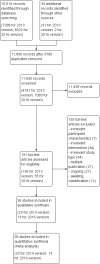



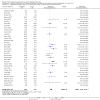





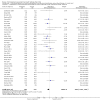

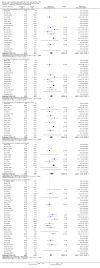
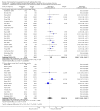
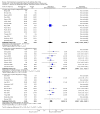

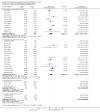


Update of
-
Electromechanical-assisted training for walking after stroke.Cochrane Database Syst Rev. 2013 Jul 25;2013(7):CD006185. doi: 10.1002/14651858.CD006185.pub3. Cochrane Database Syst Rev. 2013. Update in: Cochrane Database Syst Rev. 2017 May 10;5:CD006185. doi: 10.1002/14651858.CD006185.pub4. PMID: 23888479 Free PMC article. Updated.
Similar articles
-
Electromechanical-assisted training for walking after stroke.Cochrane Database Syst Rev. 2013 Jul 25;2013(7):CD006185. doi: 10.1002/14651858.CD006185.pub3. Cochrane Database Syst Rev. 2013. Update in: Cochrane Database Syst Rev. 2017 May 10;5:CD006185. doi: 10.1002/14651858.CD006185.pub4. PMID: 23888479 Free PMC article. Updated.
-
Electromechanical-assisted training for walking after stroke.Cochrane Database Syst Rev. 2025 May 14;5(5):CD006185. doi: 10.1002/14651858.CD006185.pub6. Cochrane Database Syst Rev. 2025. PMID: 40365867
-
Electromechanical-assisted training for walking after stroke.Cochrane Database Syst Rev. 2007 Oct 17;(4):CD006185. doi: 10.1002/14651858.CD006185.pub2. Cochrane Database Syst Rev. 2007. Update in: Cochrane Database Syst Rev. 2013 Jul 25;(7):CD006185. doi: 10.1002/14651858.CD006185.pub3. PMID: 17943893 Updated.
-
Treadmill training and body weight support for walking after stroke.Cochrane Database Syst Rev. 2017 Aug 17;8(8):CD002840. doi: 10.1002/14651858.CD002840.pub4. Cochrane Database Syst Rev. 2017. PMID: 28815562 Free PMC article.
-
Electromechanical-assisted training for walking after stroke.Cochrane Database Syst Rev. 2020 Oct 22;10(10):CD006185. doi: 10.1002/14651858.CD006185.pub5. Cochrane Database Syst Rev. 2020. Update in: Cochrane Database Syst Rev. 2025 May 14;5:CD006185. doi: 10.1002/14651858.CD006185.pub6. PMID: 33091160 Free PMC article. Updated.
Cited by
-
Effectiveness of the A3 robot on lower extremity motor function in stroke patients: A prospective, randomized controlled trial.World J Clin Cases. 2024 Aug 26;12(24):5523-5533. doi: 10.12998/wjcc.v12.i24.5523. World J Clin Cases. 2024. PMID: 39188596 Free PMC article. Clinical Trial.
-
Effects of robot-assisted training on balance function in patients with stroke: A systematic review and meta-analysis.J Rehabil Med. 2021 Apr 1;53(4):jrm00174. doi: 10.2340/16501977-2815. J Rehabil Med. 2021. PMID: 33739436 Free PMC article.
-
A Brain Computer Interface Neuromodulatory Device for Stroke Rehabilitation: Iterative User-Centered Design Approach.JMIR Rehabil Assist Technol. 2023 Dec 11;10:e49702. doi: 10.2196/49702. JMIR Rehabil Assist Technol. 2023. PMID: 38079202 Free PMC article.
-
Comment on "Assessing Effectiveness and Costs in Robot-Mediated Lower Limbs Rehabilitation: A Meta-Analysis and State of the Art".J Healthc Eng. 2018 Nov 28;2018:7634965. doi: 10.1155/2018/7634965. eCollection 2018. J Healthc Eng. 2018. PMID: 30622690 Free PMC article. No abstract available.
-
Gait training using a stationary, one-leg gait exercise assist robot for chronic stroke hemiplegia: a case report.J Phys Ther Sci. 2018 Aug;30(8):1046-1051. doi: 10.1589/jpts.30.1046. Epub 2018 Jul 24. J Phys Ther Sci. 2018. PMID: 30154598 Free PMC article.
References
References to studies included in this review
Aschbacher 2006 {unpublished data only}
-
- Aschbacher B. Comparing gait training in patients after stroke with task oriented physiotherapy or robot‐assisted treadmill training: a feasibility study. Unpublished 2006.
Bang 2016 {published data only}
-
- Bang DH, Shin WS. Effects of robot‐assisted gait training on spatiotemporal gait parameters and balance in patients with chronic stroke: a randomized controlled pilot trial. NeuroRehabilitation 2016;38:343‐9. - PubMed
Brincks 2011 {published data only}
-
- Brincks J. The order of gait training, including Lokomat® and Physiotherapy, does not influence gait symmetry in subacute ambulatory persons with stroke. Physiotherapy, Supplement S1, 16th World Congress of Physical Therapy, 2011 June 20‐23 , Amsterdam. World Confederation of Physical Therapy, 2011; Vol. 97. [Number: RR‐PO‐208‐17‐Tue]
Buesing 2015 {published data only}
-
- Buesing C, Fisch G, O'Donnell M, Shahidi I, Thomas L, Mummidisetty CK, et al. Effects of a wearable exoskeleton stride management assist system (SMA) on spatiotemporal gait characteristics in individuals after stroke: a randomized controlled trial. Journal of NeuroEngineering and Rehabilitation 2015; Vol. 12, issue 69. - PMC - PubMed
Chang 2012 {published data only}
-
- Chang WH, Kim MS, Huh JP, Lee PK, Kim YH. Effects of robot‐assisted gait training on cardiopulmonary fitness in subacute stroke patients: a randomized controlled study. Neurorehabilitation and Neural Repair 2012;26(4):318–24. - PubMed
-
- Kim M, Kim YH, Lee PKW, Hyong MK, Jung PH. Effect of robot‐assisted gait therapy on cardiopulmonary fitness in subacute stroke patients. Neurorehabilitation and Neural Repair 2008;22:594. - PubMed
Cho 2015 {published data only}
Chua 2016 {published data only}
-
- Chua J, Culpan J, Menon E. Efficacy of an electromechanical gait trainer poststroke in Singapore: a randomized controlled trial. Archives of Physical Medicine and Rehabilitation 2016;97:683‐90. - PubMed
Dias 2006 {published data only}
-
- Dias D, Laíns J, Pereira A, Nunes R, Caldas J, Amaral C, et al. Partial body weight support in chronic hemiplegics: a randomized control trial. Europa Medicophysica 2007;43(4):499‐504. - PubMed
Fisher 2008 {published and unpublished data}
-
- Fisher S. Use of autoambulator for mobility improvement in patients with central nervous system (CNS) injury or disease. Neurorehabilitation and Neural Repair 2008;22:556.
-
- Fisher S, Lucas L, Thrasher TA. Robot‐assisted gait training for patients with hemiparesis due to stroke. Topics in Stroke Rehabilitation 2011;18(3):269‐76. - PubMed
Forrester 2014 {published data only}
Geroin 2011 {published data only}
-
- Geroin C, Picelli A, Munari D, Waldner A, Tomelleri C, Smania N. Combined transcranial direct current stimulation and robot‐assisted gait training in patients with chronic stroke: a preliminary comparison. Clinical Rehabilitation 2011;25(6):537‐48. - PubMed
Han 2016 {published data only}
Hidler 2009 {published data only (unpublished sought but not used)}
-
- Hidler J, Nichols D, Pelliccio M, Brady K, Campbell DD, Kahn JH, et al. Multicenter randomized clinical trial evaluating the effectiveness of the Lokomat in subacute stroke. Neurorehabilitation and Neural Repair 2009;23(1):5‐13. - PubMed
Hornby 2008 {published data only}
-
- Hornby TG, Campbell DD, Kahn JH, Demott T, Moore JL, Roth HR. Enhanced gait‐related improvements after therapist‐ versus robotic‐assisted locomotor training in subjects with chronic stroke: a randomized controlled study. Stroke 2008;39(6):1786‐92. - PubMed
Husemann 2007 {published data only}
-
- Husemann B, Müller F, Krewer C, Laß A, Gille C, Heller S, et al. Effects of locomotion training with assistance of a driven gait orthosis in hemiparetic patients after stroke. Neurologie & Rehabilitation 2004;10(4):25.
-
- Husemann B, Müller F, Krewer C, Laß A, Gille C, Heller S, et al. Effects of locomotion training with assistance of a robot‐driven gait orthosis in hemiparetic patients after stroke: a randomized controlled pilot study. Stroke 2007;38(2):349‐54. - PubMed
Kim 2015 {published data only}
-
- Kim S‐Y, Yang L, Park IJ, Kim EJ, Park MS, You SH, et al. Effects of innovative WALKBOT robotic‐assisted locomotor training on balance and gait recovery in hemiparetic stroke: a prospective, randomized, experimenter blinded case control study with a four‐week follow‐up. IEEE Transactions on Neural Systems & Rehabilitation Engineering 2015;23(4):636‐42. [1558‐0210] - PubMed
Kyung 2008 {published and unpublished data}
-
- Jung KH, Ha HG, Shin HJ, Ohn SH, Sung DH, Lee PKW, et al. Effects of robot‐assisted gait therapy on locomotor recovery in stroke patients. Journal of Korean Academy of Rehabilitation Medicine 2008;32:258‐66.
-
- Kyung HJ, Kim YH. Effects of robot‐assisted gait therapy on locomotor recovery in stroke patients. Asia‐Oceanian Conference of Physical & Rehabilitation Medicine; 2008 May 16‐19; Nanjing, China. 2008.
Mayr 2008 {published and unpublished data}
-
- Mayr A, Quirbach E, Picelli A, Kofler M, Smania N, Saltuari L. Effect of early robot‐assisted gait retraining in nonambulatory patients with stroke: a single‐blind randomized controlled trial. Unpublished 2016. - PubMed
-
- Mayr A, Saltuari L, Quirbach E. Impact of Lokomat training on gait rehabilitation. Neurorehabilitation and Neural Repair 2008;22(5):596. - PubMed
Morone 2011 {published and unpublished data}
-
- Morone G, Bragoni M, Iosa M, Angelis D, Venturiero V, Coiro P, et al. Who may benefit from robotic‐assisted gait training? A randomized clinical trial in patients with subacute stroke. Neurorehabilitation and Neural Repair 2011;25(7):636‐44. - PubMed
Noser 2012 {published data only (unpublished sought but not used)}
-
- NCT00975156. NCT00975156 [Improving ambulation post stroke with robotic training]. clinicaltrials.gov/show/NCT00975156 (first received: 10 September 2009).
Ochi 2015 {published data only}
-
- Ochi M, Wada F, Saeki S, Hachisuka K. Gait training in subacute non‐ambulatory stroke patients using a full weight‐bearing gait‐assistance robot: a prospective, randomized, open, blinded‐endpoint trial. Journal of the Neurological Sciences 2015; Vol. 353, issue 1‐2:130‐6. [1878‐5883] - PubMed
Peurala 2005 {published data only}
-
- Peurala S, Tarkka I, Pitkänen K, Sivenius J. The effectiveness of body weight‐supported gait training and floor walking in patients with chronic stroke. Archives of Physical Medicine and Rehabilitation 2005;86:1557‐64. - PubMed
-
- Peurala SH, Pitkanen K, Sivenius J, Tarkka I. Body‐weight supported gait exercise compared with floor walking in chronic stroke patients. Archives of Physical Medicine and Rehabilitation 2004;85:E7. - PubMed
-
- Peurala SH, Pitkanen K, Sivenius J, Tarkka IM. Body‐weight supported gait trainer exercises with or without functional electrical stimulation improves gait in patients with chronic stroke. Neurorehabilitation and Neural Repair 2006;20(1):98.
Peurala 2009 {published and unpublished data}
-
- Peurala SH, Airaksinen O, Huuskonen P, Jäkälä P, Juhakoski M, Sandell K, et al. Effects of intensive therapy using Gait Trainer or floorwalking exercises early after stroke. Journal of Rehabilitation Medicine 2009;41(3):166‐73. - PubMed
Picelli 2016 {published data only}
-
- Picelli A, Bacciga M, Melotti C, Marchina E, Verzini E, Ferrari F, et al. Combined effects of robot‐assisted gait training and botulinum toxin type A effect on spastic equinus foot in patients with chronic stroke: a pilot, single blind, randomized controlled trial. European Journal of Physical and Rehabilitation Medicine 2016; Vol. 52, issue 6:759‐766. [PUBMED: 27098300] - PubMed
Pohl 2007 {published data only}
-
- Pohl M, Werner C, Holzgraefe M, Kroczek G, Mehrholz J, Wingendorf I, et al. Repetitive locomotor training and physiotherapy improve walking and basic activities of daily living in subacute, non‐ambulatory stroke patients: a single‐blind, randomised multi‐centre trial (DEutsche GAngtrainerStudie, DEGAS). Clinical Rehabilitation 2007;21(1):17‐27. - PubMed
Saltuari 2004 {published data only}
-
- Saltuari L. Efficiency of Lokomat training in stroke patients. Neurologie & Rehabilitation 2004;10(4):S4.
Schwartz 2006 {unpublished data only}
-
- Schwartz I, Katz‐Leurer M, Fisher I, Sajin A, Shochina M, Meiner Z. The effectiveness of early locomotor therapy in patients with first CVA. Collaborative Evaluation of Rehabilitation in Stroke Across Europe (CERISE) Congress; 2006 February 10‐11; Leuven, Belgium. 2006.
Stein 2014 {published data only}
-
- Stein J, Bishop L, Stein DJ, Wong CK. Gait training with a robotic leg brace after stroke. American Journal of Physical Medicine & Rehabilitation 2014;93(11):987‐94. [0894‐9115] - PubMed
Tanaka 2012 {published data only}
-
- Tanaka N, Saitou H, Takao T, Iizuka N, Okuno J, Yano H, et al. Effects of gait rehabilitation with a footpad‐type locomotion interface in patients with chronic post‐stroke hemiparesis: a pilot study. Clinical Rehabiilation 2012;26(8):686‐95. - PubMed
Tong 2006 {published and unpublished data}
-
- Li LSW, Tong RYU, Ng MFW, So EFM. Effectiveness of gait trainer in stroke rehabilitation. Journal of the Neurological Sciences 2005;238(Suppl 1):S81.
-
- Ng MFW, Tong RKY, Li LSW. A pilot study of randomized clinical controlled trial of gait training in subacute stroke patients with partial body‐weight support electromechanical gait trainer and functional electrical stimulation: six‐month follow‐up. Stroke 2008;39:154‐60. - PubMed
-
- Ng MFW, Tong RKY, So EFM, Li LSW. The therapeutic effect of electromechanical gait trainer and functional electrical stimulation for patients with acute stroke. Neurorehabilitation and Neural Repair 2006;20(1):97 (Abstract F1D‐7).
-
- Tong RKY, Ng MF, Li LS. Effectiveness of gait training using an electromechanical gait trainer, with and without functional electric stimulation, in subacute stroke: a randomized controlled trial. Archives of Physical Medicine and Rehabilitation 2006;87(10):1298‐304. - PubMed
Ucar 2014 {published data only}
-
- Uçar DE, Paker N, Buğdaycı D. Lokomat: a therapeutic chance for patients with chronic hemiplegia. NeuroRehabilitation 2014;34(3):447‐53. [1053: 8135] - PubMed
Van Nunen 2012 {published data only}
-
- Nunen M. RCT evaluating the effectiveness of robot‐assisted treadmill training in restoring walking ability of stroke patients. 7th World Congress of Neurological Rehabilitation; 2012 May 16‐19; Melbourne, Australia. Melbourne: World Federation for Neurorehabilittaion, 2012:210. [Abstract ID: 537, Poster No. 296]
-
- Nunen MPM, Gerrits KHL, Konijnenbelt M, Janssen TWJ, Haan A. Recovery of walking ability using a robotic device in subacute stroke patients: a randomized controlled study. Disability & Rehabilitation: Assistive Technology 2015;10(2):141‐8. [1748‐3107] - PubMed
Waldman 2013 {published data only}
-
- Waldman G, Yang C‐Y, Ren Y, Liu L, Guo X, Harvey RL, et al. Effects of robot‐guided passive stretching and active movement training of ankle and mobility impairments in stroke. NeuroRehabilitation. IOS Press, 2013; Vol. 32, issue 3:625‐34. [1053‐8135] - PubMed
Watanabe 2014 {published data only}
-
- Watanabe H, Tanaka N, Inuta T, Saitou H, Yanagi H. Locomotion improvement using a hybrid assistive limb in recovery phase stroke patients: a randomized controlled pilot study. Archives of Physical Medicine and Rehabilitation 2014;95(11):2006‐12. [0003: 9993] - PubMed
Werner 2002 {published data only}
-
- Werner C, Frankenberg S, Treig T, Konrad M, Hesse S. Treadmill training with partial body weight support and an electromechanical gait trainer for restoration of gait in subacute stroke patients: a randomized crossover study. Stroke 2002;33(12):2895‐901. - PubMed
References to studies excluded from this review
Bae 2014 {published data only}
-
- Bae Y, Ko Y, Chang W, Lee J, Lee K, Park Y, et al. Effects of robot‐assisted gait training combined with functional electrical stimulation on recovery of locomotor mobility in chronic stroke patients: a randomized controlled trial. Journal of Physical Therapy Science 2014; Vol. 26, issue 12:1949‐53. [0915: 5287] - PMC - PubMed
Byun 2011 {published data only}
-
- Byun SD, Jung TD, Kim CH, Lee YS. Effects of the sliding rehabilitation machine on balance and gait in chronic stroke patients ‐ a controlled clinical trial. Clinical Rehabilitation 2011;25(5):408‐15. [1477‐0873: (Electronic)] - PubMed
Caldwell 2000 {published data only}
-
- Caldwell C, Medley A. Effects of bicycling, treadmill, and variable surfaces on gait in people following a CVA. Neurology Report 2000;24(5):203.
Danzl 2013 {published data only}
David 2006 {published data only}
-
- David D, Regnaux JP, Lejaille M, Louis A, Bussel B, Lofasso F. Oxygen consumption during machine‐assisted and unassisted walking: a pilot study in hemiplegic and healthy humans. Archives of Physical Medicine and Rehabilitation 2006;87:482‐9. - PubMed
Forrester 2016 {published data only}
Gong 2003 {published data only}
-
- Gong S, Zhang J. Effect of early rehabilitation training on daily life activity of patients with hemiplegia after stroke. Chinese Journal of Clinical Rehabilitation 2003;7(5):848‐9.
Goodman 2014 {published data only}
-
- Goodman R, Rietsehel J, Roy A, Jung B, Diaz J, Macko R, et al. Increased reward in ankle robotics training enhances motor control and cortical efficiency in stroke. Journal of Rehabilitation Research and Development 2014; Vol. 51, issue 2:213‐7. [0748: 7711] - PubMed
Hesse 2001 {published data only}
-
- Hesse S, Werner C, Uhlenbrock D, Frankenberg S, Bardeleben A, Brandl‐Hesse B. An electromechanical gait trainer for restoration of gait in hemiparetic stroke patients: preliminary results. Neurorehabilitation and Neural Repair 2001;15:37‐48. - PubMed
Hsieh 2014 {published data only}
-
- Hsieh YW, Lin KC, Horng YS, Wu CY, Wu TC, Ku FL. Sequential combination of robot‐assisted therapy and constraint‐induced therapy in stroke rehabilitation: a randomized controlled trial. Journal of Neurology 2014, (5):1037‐45. - PubMed
Mirelman 2009 {published data only}
-
- Mirelman A, Bonato P, Deutsch JE. Effects of training with a robot‐virtual reality system compared with a robot alone on the gait of individuals after stroke. Stroke 2009;40(1):169‐74. - PubMed
Morone 2016 {published data only}
-
- Morone G, Annicchiarico R, Iosa M, Federici A, Paolucci S, Cortes U, et al. Overground walking training with the i‐Walker, a robotic servo‐assistive device, enhances balance in patients with subacute stroke: a randomized controlled trial. Journal of NeuroEngineering and Rehabilitation 2016;13(47). - PMC - PubMed
NCT01337960 {published data only}
-
- NCT01337960. Ankle robotics training after stroke. clinicaltrials.gov/show/NCT01337960 (first received 15 April 2011).
Page 2008 {published data only}
-
- Page SJ, Levine P, Teepen J, Hartman EC. Resistance‐based, reciprocal upper and lower limb locomotor training in chronic stroke: a randomized, controlled crossover study. Clinical Rehabilitation 2008;22(7):610‐7. - PubMed
Park 2015 {published data only}
Patten 2006 {published data only}
Pennati 2015 {published data only}
-
- Pennati GV, Re C, Messineo I, Bonaiuti D. How could robotic training and botulinum toxin be combined in chronic post stroke upper limb spasticity? A pilot study. European Journal of Physical & Rehabilitation Medicine 2015;51(4):381‐7. [1973‐9095] - PubMed
Picelli 2015 {published data only}
-
- Picelli A, Chemello E, Castellazzi P, Roncari L, Waldner A, Saltuari L, et al. Combined effects of transcranial direct current stimulation (tDCS) and transcutaneous spinal direct current stimulation (tsDCS) on robot‐assisted gait training in patients with chronic stroke: a pilot, double blind, randomized controlled trial. Restorative Neurology & Neuroscience 2015;33(3):357‐68. [1878‐3627] - PubMed
Pitkanen 2002 {published data only}
-
- Pitkanen K, Tarkka I, Sivenius J. Walking training with partial body weight support versus conventional walking training of chronic stroke patients: preliminary findings. Neurorehabilitation and Neural Repair 2001;15(4; SupplementAbstracts 3rd World Conference On Neurorehabilitation; April 2‐6, 2002 Venice, Italy):312. [http://journals.sagepub.com/doi/pdf/10.1177/154596830101500402]
Richards 1993 {published data only}
-
- Richards CL, Malouin F, Wood‐Dauphinee S, Williams JI, Bouchard JP, Brunet D. Task‐specific physical therapy for optimization of gait recovery in acute stroke patients. Archives of Physical Medicine and Rehabilitation 1993;74:612‐20. - PubMed
Richards 2004 {published data only}
-
- Richards CL, Malouin F, Bravo G, Dumas F, Wood‐Dauphinee S. The role of technology in task‐oriented training in persons with subacute stroke: a randomized controlled trial. Neurorehabilitation and Neural Repair 2004;18(4):199‐211. - PubMed
Shirakawa 2001 {published data only}
-
- Shirakawa R, Uchida SU, Okajima YO, Sakaki TS, Shutou HS. Therapeutic effects of power‐assist training combined with biofeedback on hemiplegia by Therapeutic Exercise Machine (TEM). 1st International Congress of International Society of Physical and Rehabilitation Medicine (ISPRM); 2001 July 7‐13; Amsterdam. 2001.
Skvortsova 2008 {published data only (unpublished sought but not used)}
-
- Skvortsova VI, Ivanova GE, Kovrazhkina EA, Rumiantseva NA, Staritsyn AN, Suvorov AIu, et al. The use of a robot‐assisted Gait Trainer GT1 in patients in the acute period of cerebral stroke: a pilot study. Zhurnal nevrologii i psikhiatrii imeni S.S. Korsakova 2008;Suppl 23:28‐34. - PubMed
-
- Skvortsova VI, Ivanova GE, Kovrazhkina EA, Rumyantseva NA, Staritsin AN, Sogomonyan EK. The efficacy of gait rehabilitation after stroke training with assistance of a robotic device gait trainer: a pilot study. International Journal of Stroke 2008;3(Suppl 3):355.
Stoller 2015 {published data only}
-
- Stoller O, Bruin ED, Schindelholz M, Schuster‐Amft C, Bie RA, Hunt KJ. Feedback‐controlled robotics‐assisted treadmill exercise for cardiovascular training and assessment early after severe stroke. Cerebrovascular Diseases 2015;39:107. [1015‐9770]
Wu 2014 {published data only}
References to studies awaiting assessment
Chernikova 2014 {published data only}
-
- Chernikova LA, Klochkov AS. The influence of physical training with the use of a Lokomat robotic system on the walking ability of the patients with post‐stroke hemiparesis. Voprosy Kurortologii, Fizioterapii i Lechebnoi Fizicheskoi Kultury 2014, issue 3:13‐7. [0042‐8787] - PubMed
Globokar 2005 {published data only}
-
- Globokar D. Gait trainer in neurorehabilitation of patients after stroke. 3rd World Congress of the International Society of Physical and Rehabilitation Medicine ISPRM; 2005 April 10‐15; Sao Paulo, Brazil. Sao Paulo, Brazil, 2005:987‐1.
Golyk 2006 {published data only (unpublished sought but not used)}
-
- Golyk VA, Pivnyk AP, Ipatov AV. Constraint‐induced movement therapy for walking improvement (comparison of two walking training machine modifications' efficacy) for stroke patients. European Journal of Neurology 2006;13(Suppl 2):263.
Jang 2005 {published data only}
-
- Jang SJ, Park SW, Kim ES, Wee HM, Kim YH. Electromechanical gait trainer for restoring gait in hemiparetic stroke patients. 3rd World Congress of the International Society of Physical and Rehabilitation Medicine ISPRM; 2005 April 10‐15; Sao Paulo, Brazil. Sao Paulo, Brazil, 2005:909‐1.
Kim 2001 {published data only}
-
- Kim BO, Lee JJ, Cho KH, Kim SH. Gait training robot (gaiTrainer) in rehabilitation. 1st International Congress of International Society of Physical and Rehabilitation Medicine (ISPRM); 2001 July 7‐13; Amsterdam. 2001. [Abstract Th.139.P]
Kim 2014 {published data only}
-
- Kim JH, Park HI, Jang CH, Lim YH. Effects of robot‐assisted therapy on lower limb in geriatric patients with subacute stroke. European Geriatric Medicine 2014; Vol. 5, issue Supplement 1:S174. [DOI: 10.1016/S1878‐7649(14)70458‐9] - DOI
Koeneman 2004 {published data only (unpublished sought but not used)}
-
- Koeneman JB. Air muscle device for ankle stroke rehabilitation. www.sbir.gov/sbirsearch/detail/210093 (accessed May 2017).
Mehrberg 2001 {published data only (unpublished sought but not used)}
-
- Mehrberg RD, Flick C, Dervay J, Carmody J, Carrington C, Jermer M. Clinical evaluation of a new over ground partial body weight support assistive device in hemiparetic stroke patients. Archives of Physical Medicine and Rehabilitation 2001;82:1293 (Abstract 10).
Ohata 2015 {published data only}
-
- Ohata K, Tsuboyama T, Watanabe A, Takahashi H. Gait training using new robotics device for patients with hemiplegia after stroke: a randomized cross‐over trial. Physiotherapy 2015;101:eS1123‐4. [0031‐9406]
Sale 2012 {published data only}
-
- NCT01678547. Robot Walking Rehabilitation in Stroke Patients. clinicaltrials.gov/show/NCT01678547 (date first received 31 August 2012. [NCT01678547]
Wu 2012 {published data only}
-
- Wu H, Gu XD, Fu JM, Yao YH, Li JH, Xu ZS. Effects of rehabilitation robot for lower‐limb on motor function in hemiplegic patients after stroke. National Medical Journal of China 2012, issue 37:2628‐31. - PubMed
Yoon 2015 {published data only}
-
- Yoon Y, Seok TY, Yu K, Lee KJ, Kang SK, Yun SB. Gait training with the newly developed active‐assistive system for gait is feasible for hemiplegic patients after stroke. PM&R 2015; Vol. 1:S115‐6. [193‐4148]
Zhu 2016 {published data only}
-
- Zhu L, Song W, Liu L, Zhang R, Zhang Y. Rehabilitation effect of lower limb rehabilitation training robot combined with task‐oriented training on walking ability after stroke. Chinese Journal of Cerebrovascular Diseases 2016; Vol. 13, issue 5:240‐4 and 248. [1672‐5921]
References to ongoing studies
Louie 2015 {published data only}
-
- Louie DR, Eng JJ, Mortenson WB, Yao J. Use of a powered robotic exoskeleton to promote walking recovery after stroke: study protocol for a randomized controlled trial. International Journal of Stroke. 2015; Vol. 10, Supplement 4:89. [http://onlinelibrary.wiley.com/doi/10.1111/ijs.12633_2/pdf]
NCT00284115 {unpublished data only}
-
- Brissot R, Laviolle B. Efficacy of a mechanical gait repetitive training technique in hemiparetic stroke patients. www.clinicaltrials.gov (last accessed September 2016).
NCT00530543 {published data only}
-
- NCT00530543. Effects of gait training with assistance of a robot‐driven gait orthosis in hemiparetic patients after stroke. clinicaltrials.gov 2007. - PubMed
NCT01146587 {published data only}
-
- Waldner A. Robot assisted therapy for acute stroke patients: a comparative study of GangTrainer GT I, Lokomat system and conventional physiotherapy. www.clinicaltrials.gov (last accessed September 2016).
NCT01187277 {published data only}
-
- Chanubol R. Robotic versus conventional training on hemiplegic gait. www.clinicaltrials.gov (last accessed September 2016).
-
- Chanubol R, Wongphaet P, Werner C, Chavanich N, Panichareon L. Gait rehabilitation in subacute hemiparetic stroke: robot‐assisted gait training versus conventional physical therapy. Journal of the Neurological Sciences 2013; Vol. 333, issue Suppl 1:e574.
NCT01678547 {published data only}
-
- Sale P. Effect of robot assisted treatment on gait performance in stroke patients. www.clinicaltrials.gov (last accessed December 2012).
NCT01726998 {published data only}
-
- NCT01726998. Effects of locomotion training with assistance of a robot‐driven gait orthosis in hemiparetic patients after subacute stroke. www.clinicaltrials.gov 2014. - PubMed
NCT02114450 {published data only}
-
- NCT02114450. Human‐machine system for the H2 lower limb exoskeleton. www.clinicaltrials.gov 2016.
NCT02471248 {published data only}
-
- NCT02471248. Interactive exoskeleton robot for walking ‐ ankle joint. www.clinicaltrials.gov 2016.
NCT02483676 {published data only}
-
- NCT02483676. Ankle robot to reduce foot‐drop in stroke. www.clinicaltrials.gov 2016.
NCT02545088 {published data only}
-
- NCT02545088. New technology for individualised, intensive training of gait after stroke ‐ study II (HAL‐RCT‐II). www.clinicaltrials.gov 2015.
NCT02680691 {published data only}
-
- NCT02680691. Robot assisted gait training in patients with infratentorial stroke. www.clinicaltrials.gov 2016.
NCT02694302 {published data only}
-
- NCT02694302. Clinical trial of robot‐assisted‐gait‐training (RAGT) in stroke patients. www.clinicaltrials.gov 2016.
NCT02755415 {published data only}
-
- NCT02755415. Clinical applicability of robot‐assisted gait training system in acute stroke patients. www.clinicaltrials.gov 2016.
NCT02781831 {published data only}
-
- NCT02781831. Robot‐assisted gait training for patients with stroke. www.clinicaltrials.gov 2016.
NCT02843828 {published data only}
-
- NCT02843828. Gait pattern analysis and feasibility of gait training with a walking assist robot in stroke patients and elderly adults. www.clinicaltrials.gov 2016.
Additional references
Adams 1993
-
- Adams HP Jr, Bendixen BH, Kappelle LJ, Biller J, Love BB, Gordon DL, et al. Classification of subtype of acute ischemic stroke: definitions for use in a multicenter clinical trial (TOAST: Trial of Org 10172 in Acute Stroke Treatment). Stroke 1993;24(1):35‐41. - PubMed
Atkins 2004
Bohannon 1988
-
- Bohannon R. Rehabilitation goals of patients with hemiplegia. International Journal of Rehabilitation Research 1988;11(2):181‐3.
Bohannon 1991
-
- Bohannon RW, Horton MG, Wikholm JB. Importance of four variables of walking to patients with stroke. International Journal of Rehabilitation Research 1991;14:246‐50. - PubMed
Carr 2003
-
- Carr J, Shepherd R. Stroke Rehabilitation: Guidelines for Exercises and Training. London: Butterworth Heinemann, 2003.
Collen 1991
-
- Collen FM, Wade DT, Robb GF, Bradshaw CM. The Rivermead Mobility Index: a further development of the Rivermead Motor Assessment. International Disability Studies 1991;13(2):50‐4. - PubMed
Colombo 2000
-
- Colombo G, Joerg M, Schreier R, Dietz V. Treadmill training of paraplegic patients using a robotic orthosis. Journal of Rehabilitation Research and Development 2000;37(6):693‐700. - PubMed
Deeks 2011
-
- Deeks JJ, Higgins JPT, Altman DG. Chapter 9: Analysing data and undertaking meta‐analyses. In: Higgins JPT, Green S (editors). Cochrane Handbook for Systematic Reviews of Interventions Version 5.1.0 [updated March 2011]. The Cochrane Collaboration, 2011. Available from handbook.cochrane.org.
Freivogel 2009
-
- Freivogel S, Schmalohr D, Mehrholz J. Improved walking ability and reduced therapeutic stress with an electromechanical gait device. Journal of Rehabilitation Medicine 2009;41:734–9. - PubMed
French 2007
French 2016
GRADEpro GDT [Computer program]
-
- McMaster University (developed by Evidence Prime, Inc.). Available from gradepro.org. GRADEpro GDT: GRADEpro Guideline Development Tool. McMaster University (developed by Evidence Prime, Inc.). Available from gradepro.org, 2015.
Hamilton 1994
-
- Hamilton BB, Laughlin JA, Fiedler RC, Granger CV. Interrater reliability of the 7‐level functional independence measure (FIM). Scandinavian Journal of Rehabilitation Medicine 1994;26(3):115‐9. - PubMed
Hesse 1999
-
- Hesse S, Sarkodie‐Gyan T, Uhlenbrock D. Development of an advanced mechanised gait trainer, controlling movement of the centre of mass, for restoring gait in non‐ambulant subjects. Biomedizinische Technik [Biomedical Engineering] 1999;44(7‐8):194‐201. - PubMed
Hesse 2003
-
- Hesse S, Schmidt H, Werner C, Bardeleben A. Upper and lower extremity robotic devices for rehabilitation and for studying motor control. Current Opinion in Neurology 2003;16(6):705‐10. - PubMed
Hesse 2010
Higgins 2011a
-
- Higgins JPT, Altman DG, Sterne JAC (editors). Chapter 8: Assessing risk of bias in included studies. In: Higgins JPT, Green S (editors). Cochrane Handbook for Systematic Reviews of Interventions Version 5.1.0 [updated March 2011]. The Cochrane Collaboration, 2011. Available from handbook.cochrane.org.
Higgins 2011b
-
- Schünemann HJ, Oxman AD, Vist GE, Higgins JPT, Deeks JJ, Glasziou P, et al. Chapter 12: Interpreting results and drawing conclusions. In: Higgins JPT, Green S (editors). Cochrane Handbook for Systematic Reviews of Interventions Version 5.1.0 [updated March 2011]. The Cochrane Collaboration, 2011. Available from handbook.cochrane.org.
Holden 1984
-
- Holden MK, Gill KM, Magliozzi MR, Nathan J, Piehl‐Baker L. Clinical gait assessment in the neurologically impaired: reliability and meaningfulness. Physical Therapy 1984;64(1):35‐40. - PubMed
Jorgensen 1995
-
- Jorgensen H, Nakayama H, Raaschou H, Olsen T. Recovery of walking function in stroke patients: the Copenhagen stroke study. Archives of Physical Medicine and Rehabilitation 1995;76:27‐32. - PubMed
Kelley 2013
-
- Kelley CP, Childress J, Boake C, Noser EA. Over‐ground and robotic‐assisted locomotor training in adults with chronic stroke: a blinded randomized clinical trial. Disability & Rehabilitation: Assistive Technology. Philadelphia, Pennsylvania: Taylor & Francis Ltd, 2013; Vol. 8, issue 2:161‐8. [1748‐3107] - PubMed
Kim 2008
-
- Kim M, Kim YH, Lee PKWY, Hyong MK, Jung PH. Effect of robot‐assisted gait therapy on cardiopulmonary fitness in subacute stroke patients. Neurorehabilitation and Neural Repair 2008;22:594. - PubMed
Kwakkel 1999
-
- Kwakkel G, Wagenaar RC, Twisk JW, Lankhorst GJ, Koetsier JC. Intensity of leg and arm training after primary middle‐cerebral‐artery stroke: a randomised trial. Lancet 1999;354(9174):191‐6. - PubMed
Louie 2016
Mehrholz 2012a
-
- Mehrholz J, Pohl M. Electromechanical‐assisted gait training after stroke: a systematic review comparing end‐effector and exoskeleton devices. Journal of Rehabilitation Medicine 2012;44(3):193‐9. - PubMed
Mehrholz 2012b
-
- Mehrholz J, Hädrich A, Platz T, Kugler J, Pohl M. Electromechanical and robot‐assisted arm training for improving generic activities of daily living, arm function, and arm muscle strength after stroke. Cochrane Database of Systematic Reviews 2012, Issue 6. [DOI: 10.1002/14651858.CD006876.pub3] - DOI - PubMed
Mehrholz 2014
MIT 2005
-
- Massachusetts Institute of Technology. MIT develops Anklebot for stroke patients. web.mit.edu/newsoffice/2005/stroke‐robot.html (accessed 20 December 2005).
Nuyens 2002
-
- Nuyens GE, Weerdt WJ, Spaepen AJ Jr, Kiekens C, Feys HM. Reduction of spastic hypertonia during repeated passive knee movements in stroke patients. Archives of Physical Medicine and Rehabilitation 2002;83(7):930‐5. - PubMed
Pollock 2014
RevMan 2014 [Computer program]
-
- The Nordic Cochrane Centre, The Cochrane Collaboration. Review Manager (RevMan). Version 5.3. Copenhagen: The Nordic Cochrane Centre, The Cochrane Collaboration, 2014.
Sackett 1996
-
- Sackett DL, Deeks JJ, Altman DG. Down with odds ratios!. Evidence‐based Medicine 1996;1:164‐6.
Schmidt 2005
-
- Schmidt H, Hesse S, Bernhardt R, Krüger J. HapticWalker ‐ a novel haptic foot device. ACM Transactions on Applied Perception 2005;2(2):166‐80.
States 2009
Van Peppen 2004
-
- Peppen RP, Kwakkel G, Wood‐Dauphinee S, Hendriks HJ, Wees PJ, Dekker J. The impact of physical therapy on functional outcomes after stroke: what's the evidence?. Clinical Rehabilitation 2004;18(8):833‐62. - PubMed
Veneman 2005
-
- Veneman J, Kruidhof R, Helm FCT, Kooy H. Design of a Series Elastic‐ and Bowdencable‐based actuation system for use as torque‐actuator in exoskeleton‐type training robots. International Conference on Rehabilitation Robotics; 2005 June 28‐July 1; Chicago (IL). 2005.
Wade 1988
-
- Wade DT, Collin C. The Barthel ADL Index: a standard measure of physical disability?. International Disability Studies 1988;10(2):64‐7. - PubMed
WHO 2006
-
- World Health Organization. Cerebrovascular accident, stroke. www.who.int/topics/cerebrovascular_accident/en/ (accessed 1 February 2006).
References to other published versions of this review
Mehrholz 2006
Mehrholz 2007
Publication types
MeSH terms
Grants and funding
LinkOut - more resources
Full Text Sources
Other Literature Sources
Medical

